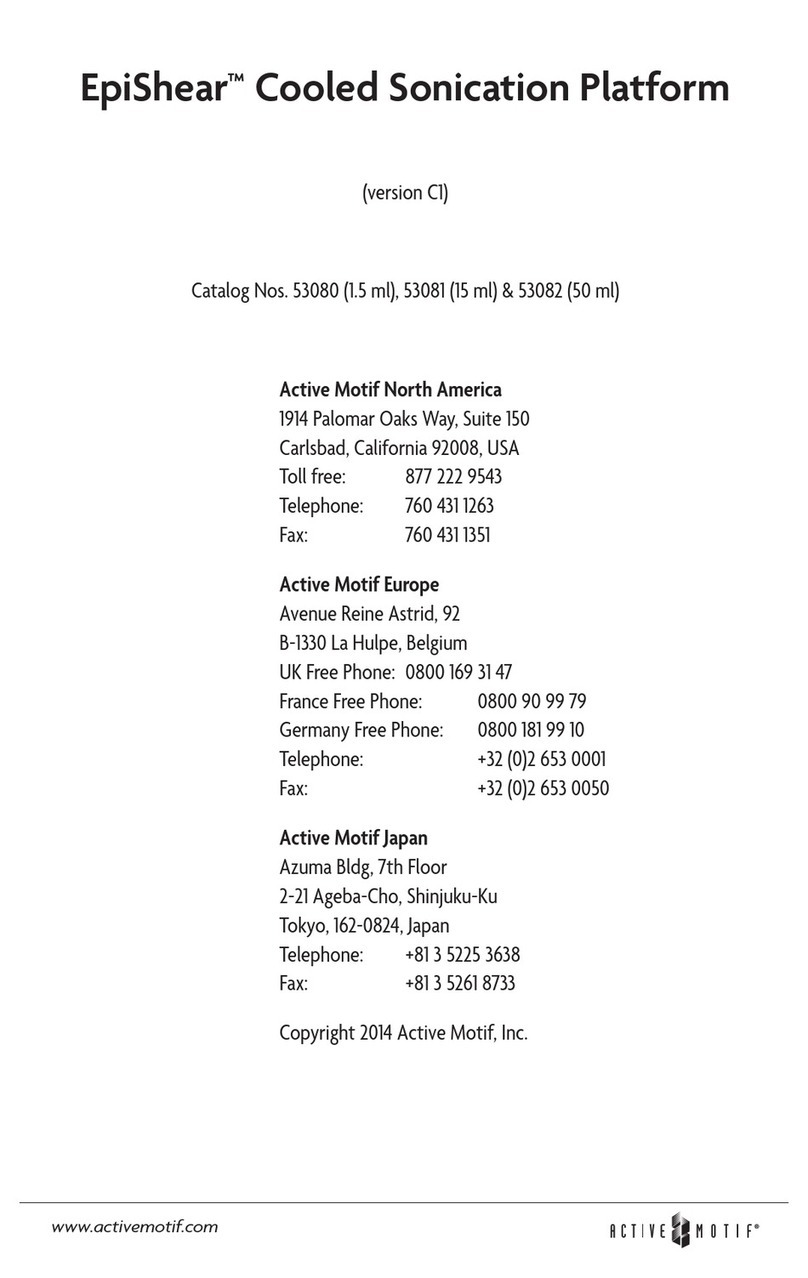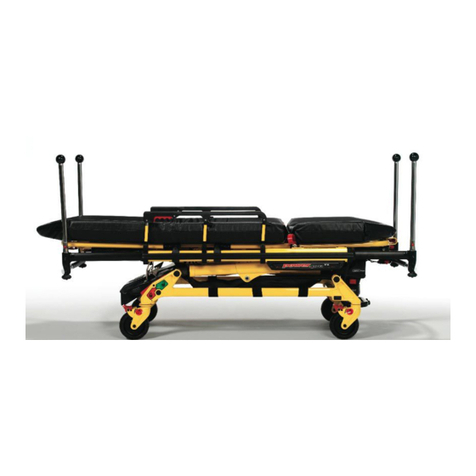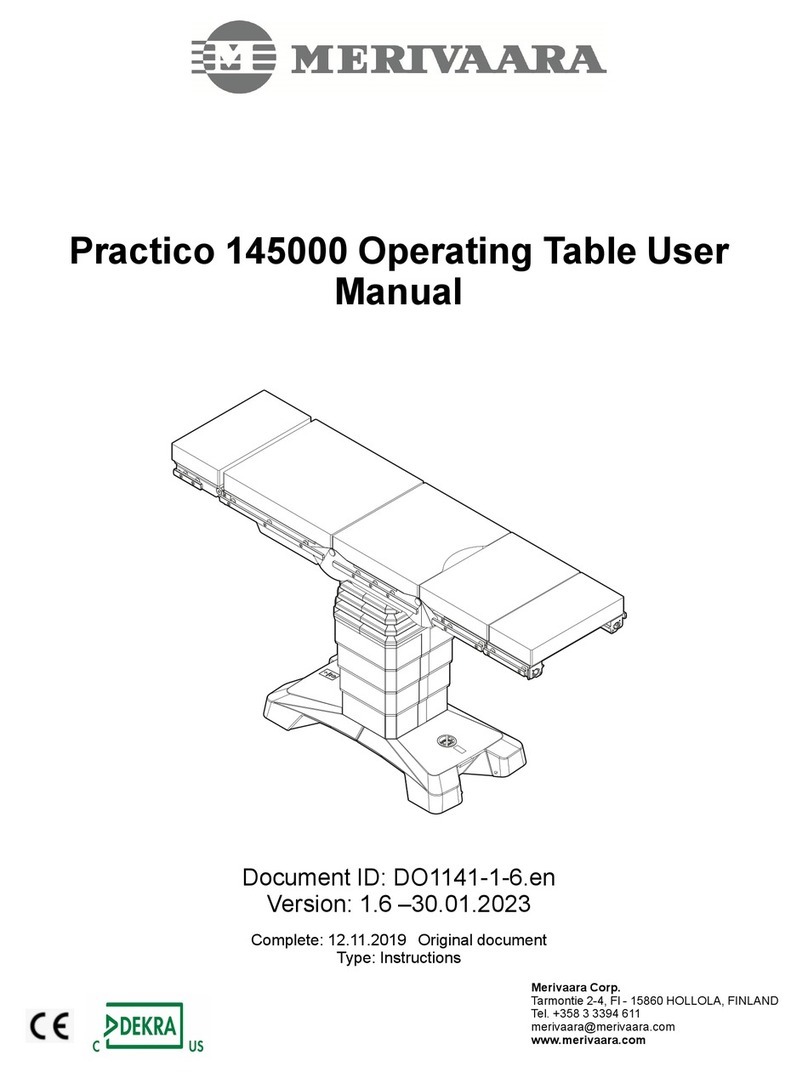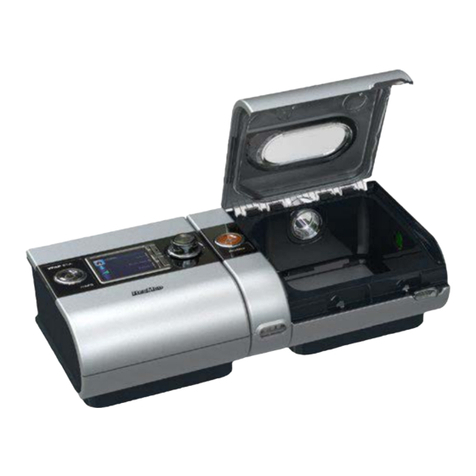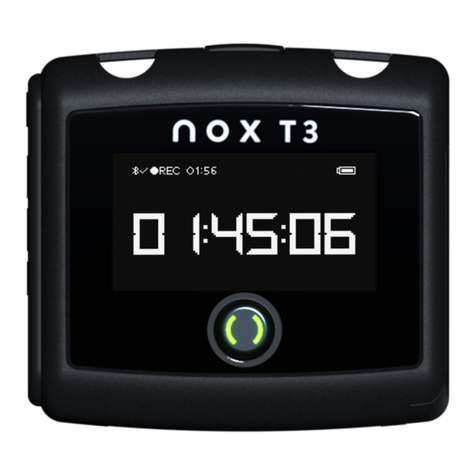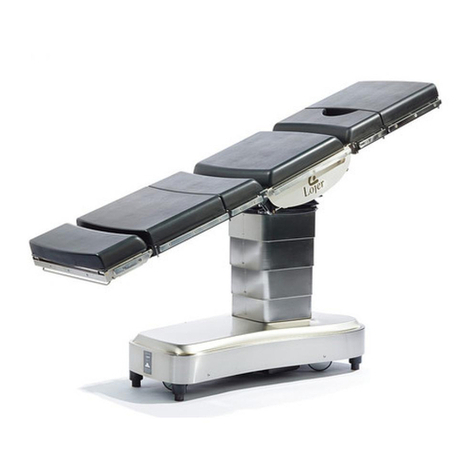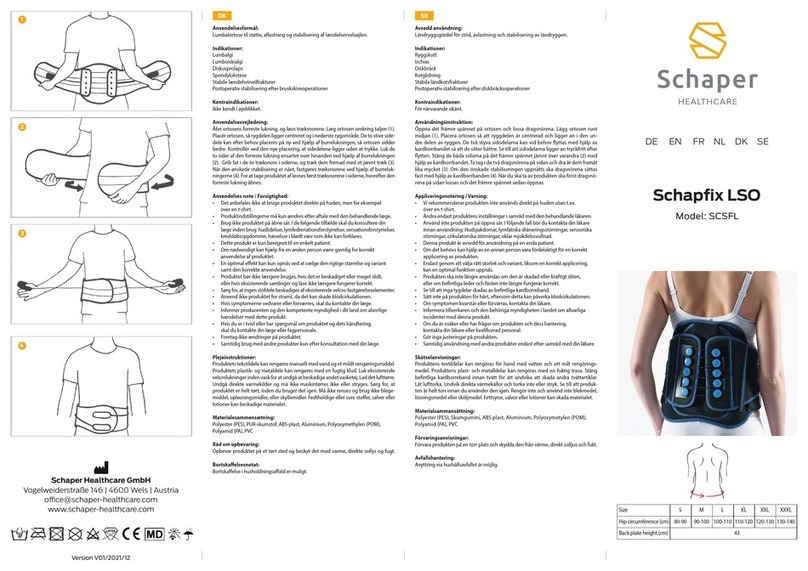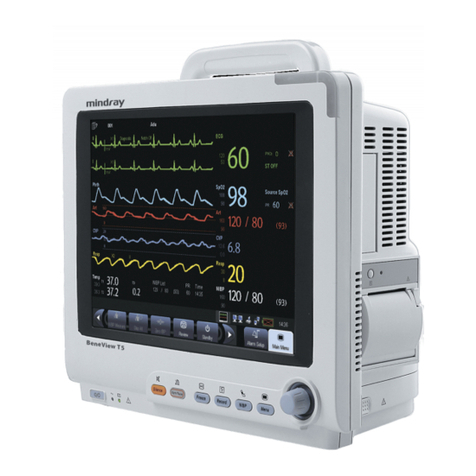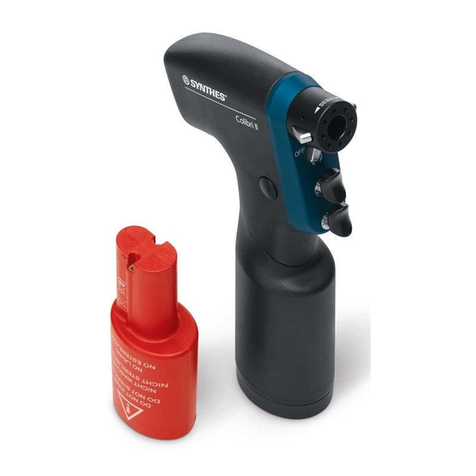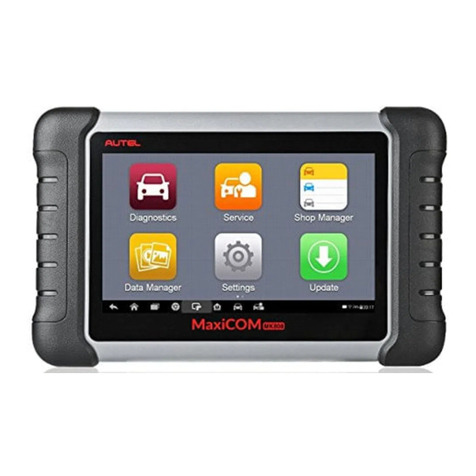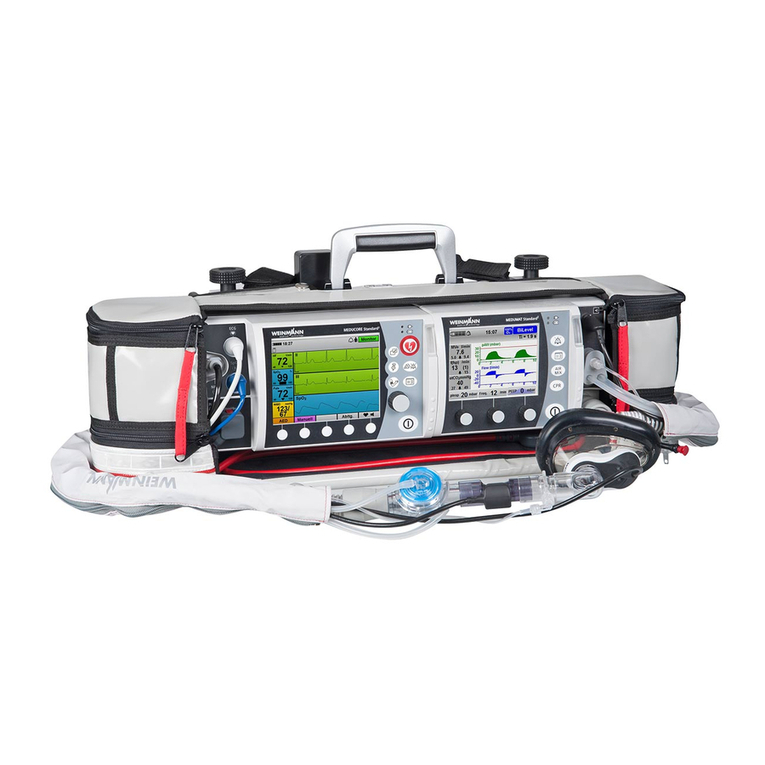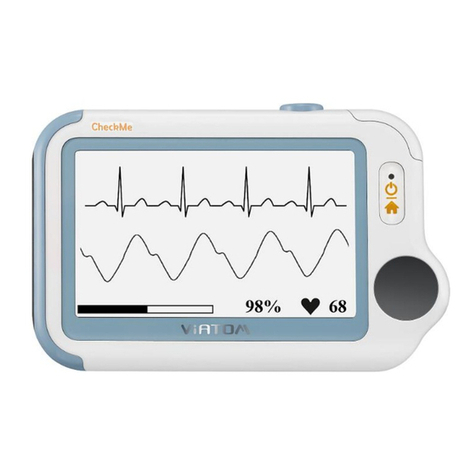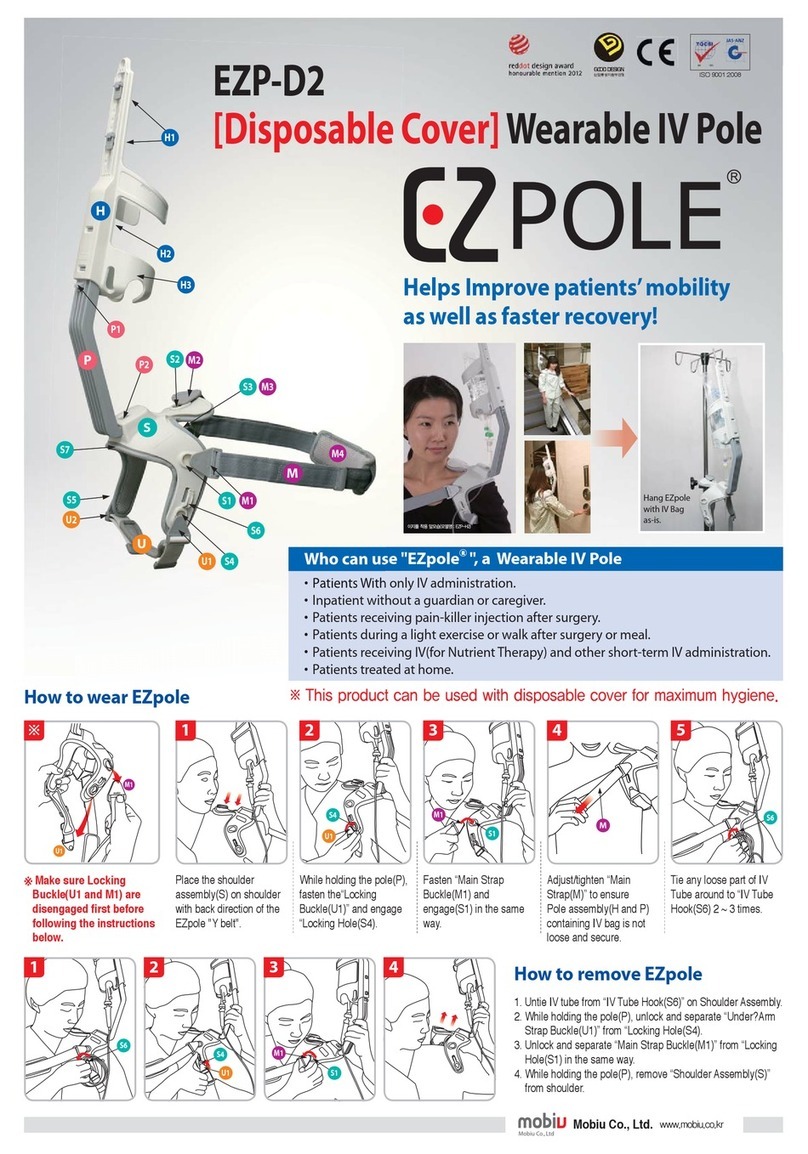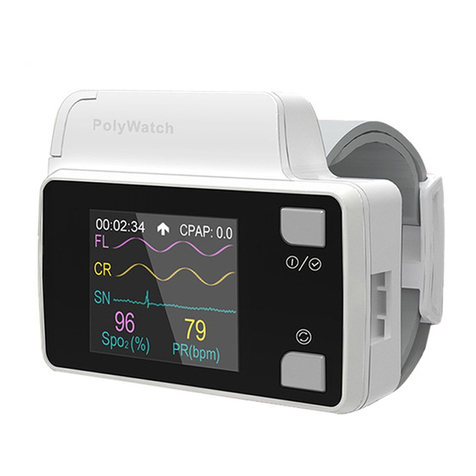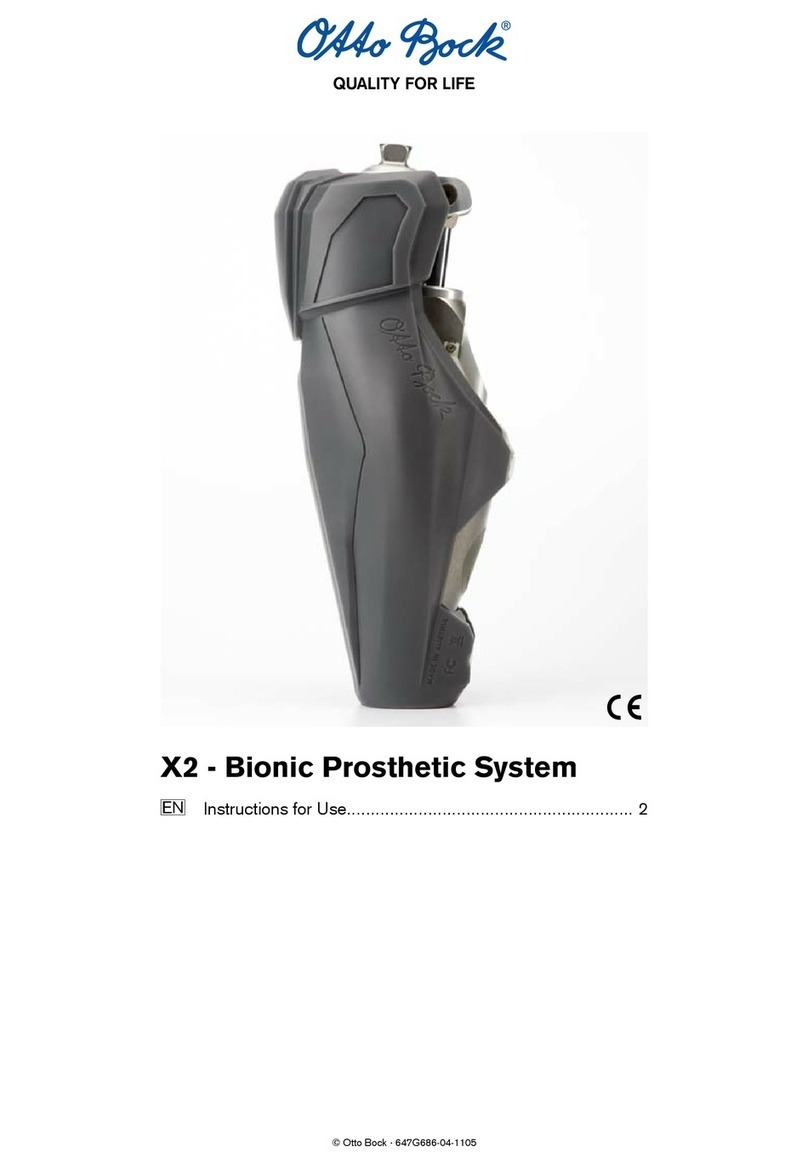Active Motif PIXUL User manual

www.activemotif.com
PIXUL™ Multi-Sample Sonicator
powered by Matchstick Technologies
Catalog No. 53130
(version A1)
Active Motif North America
1914 Palomar Oaks Way, Suite 150
Carlsbad, California 92008, USA
Toll free: 877 222 9543
Telephone: 760 431 1263
Fax: 760 431 1351
Active Motif Europe
Avenue Reine Astrid, 92
B-1310 La Hulpe, Belgium
UK Free Phone: 0800 169 31 47
France Free Phone: 0800 90 99 79
Germany Free Phone: 0800 181 99 10
Telephone: +32 (0)2 653 0001
Fax: +32 (0)2 653 0050
Active Motif Japan
Azuma Bldg, 7th Floor
2-21 Ageba-Cho, Shinjuku-Ku
Tokyo, 162-0824, Japan
Telephone: +81 3 5225 3638
Fax: +81 3 5261 8733
Active Motif China
787 Kangqiao Road
Building 10, Suite 202, Pudong District
Shanghai, 201315, China
Telephone: (86)-21-20926090
Hotline: 400-018-8123
Copyright 2020 Active Motif, Inc.

www.activemotif.com
Active Motif Limited Warranty
Active Motif warrants that the PIXUL Multi-Sample Sonicator will be free from defects for 12 months from
the date of delivery when used under normal working conditions and in accordance with manuals and other
documents. Any component that proves defective during this period will be repaired or replaced at no cost
to the purchaser. Active Motif will provide a shipping container and instructions for the customer to return
the instrument for repair or replacement. All shipping charges during the warranty period will be paid by
Active Motif. In the event of a warrantable defect, please contact Active Motif for a return authorization and
instructions prior to returning any instrument or parts.
The warranty is void if failure of the instrument or parts, including all firmware or hardware, has resulted from
accidents, abuse, improper maintenance, usage, or repair, or misapplication by the customer. It is also void if
damage is cause by any unauthorized modifications made to the instrument.
The warranty is limited to repair or replacement only, is not transferable, and is available only to the original
purchaser.
The warranty is void if the instrument is run without Active Motif Coupling Fluid (cat. no. 53136) in the cooling
reservoir. Coupling Fluid not only acts as the cooling liquid, but is also required for the transmission of energy
from the transducers to solution in the wells. Failure to run the instrument without Active Motif Coupling
Fluid will damage the transducers.
The warranty is void if the instrument is run without liquid/water in every well of the columns in the 96-well
plate that are being sonicated. Permanent damage to the transducer and electronic circuits could result if the
transducer is operated without liquid/water in every well of the columns in the 96-well plate that are being
sonicated.
Except as otherwise stated above, Active Motif’s standard Terms and Conditions apply. See www.activemotif.
com/terms-conditions for more information.
Information in this manual is subject to change without notice and does not constitute a commitment on the
part of Active Motif, Inc. It is supplied on an “as is” basis without any warranty of any kind, either explicit or
implied. Information may be changed or updated in this manual at any time.
This documentation may not be copied, transferred, reproduced, disclosed, or duplicated, in whole or in part,
without the prior written consent of Active Motif, Inc. This documentation is proprietary information and
protected by the copyright laws of the United States and international treaties.
The manufacturer of this documentation is Active Motif, Inc.
© 2020 Active Motif, Inc., 1914 Palomar Oaks Way, Suite 150; Carlsbad, CA 92008. All rights reserved.
All trademarks, trade names, service marks or logos referenced herein belong to their respective companies.

www.activemotif.com
TABLE OF CONTENTS Page
General Warnings ....................................................................1
Overview ............................................................................2
Introduction .........................................................................3
PIXUL Components Overview.........................................................5
Installing the PIXUL Multi-Sample Sonicator ...........................................6
Operating the PIXUL Multi-Sample Sonicator . . . . . . . . . . . . . . . . . . . . . . . . . . . . . . . . . . . . . . . . . .7
Maintenance .. ......................................................................9
Touchscreen Messages and Errors .....................................................9
References .... ......................................................................9
Appendix
Section A. PIXUL Sonication Parameters Guide ....................................10
Section B. Troubleshooting Guide................................................ 11
Technical Services ...................................................................12

1
www.activemotif.com
General Warnings
Don’t run the PIXUL instrument without PIXUL Coupling Fluid.
Tilting the PIXUL instrument can result in spillage of Coupling Fluid.
Do not unplug or power off the PIXUL instrument during a run. Loss of power to the instrument
while a file is open can result in corruption of the data file and operating system.
Change PIXUL Coupling Fluid every 2 months.
PIXUL Coupling Fluid temperature should be approximately 15°C at the start of the sonication run.
Don’t exceed a Coupling Fluid temperature of 35°C during sonication. If Coupling Fluid tempera-
ture is maintained within this range, in-well thermal monitoring indicates that the temperature of
the sample is within the normal range experienced by samples in all major sonication instruments
(please see referenced publication on page 9).
Only use room temperature (not previously frozen) 96-Well PIXUL Plates (cat. no. 53139) with the
PIXUL instrument. Place plates with well A1 in the upper left corner. All wells in columns being
sonicated MUST be filled with fluid. Do not reuse plates from partial runs, as this can lead to issues
with shearing consistency and sample contamination.
Don’t lift the external lid during processing of samples. Lifting the external lid initiates drainage
of PIXUL Coupling Fluid from under the plate, necessitating re-circulation of Coupling Fluid to
continue processing samples.
Any technical modifications to the device are prohibited. Service works may be carried out only by
qualified personnel.
Personal Protective Equipment, such as long sleeve clothing, safety footwear, protective gloves,
and protective goggles, is required for certain activities.

2
www.activemotif.com
Overview
Active Motif’s PIXUL Multi-Sample Sonicator is a high-throughput instrument for mechanical
shearing of DNA, RNA, chromatin, or protein from purified samples, cells, or tissue. This system
utilizes ultrasound transducers to create focused ultrasonic waveforms, transmitted through
PIXUL Coupling Fluid, to a 96-well microplate (cat. no. 53139). This flexible system allows for up
to 12 unique sonication parameters (one for each column of wells) to be set in the 96-well plate,
generating consistent and reproducible fragmentation profiles in just 10-30 minutes per plate,
depending on sample type.
product format catalog no.
PIXUL Multi-Sample Sonicator 1-96 samples 53130
*The PIXUL Multi-Sample Sonicator is powered by Matchstick Technologies.

3
www.activemotif.com
Introduction
PIXUL Multi-Sample Sonicator
Next-generation sequencing applications, such as ChIP-Seq, RNA-Seq, RIP-Seq, exome, and whole
genome sequencing, require precise sample fragmentation (200-600 bp) for compatiblity with
short read sequencing platforms. Shearing by mechanical sonication, as opposed to enzymatic
methods, is preferred for its unbiased nature and ability to produce a relatively narrow frag-
mentation profile. However, the currently available sonication systems can be incompatible with
high-throughput sample processing. The PIXUL Multi-Sample Sonicator provides a flexible and
reproducible shearing profile for up to 96 samples processed in parallel.
Furthermore, high-throughput sonication on other platforms is currently limited by the cost of
consumables (tubes, plates, and reagents). However, the low cost, round-bottom plates (cat. no.
53139) used in the PIXUL instrument are compatible with cell culture and shearing, eliminating
sample transfer steps that are inconvenient and can lead to loss of sample. Furthermore, the PIXUL
Coupling Fluid does not require lengthy degassing and can be adequately circulated and ready for
sonication in approximately 15 minutes.
Sonication of the samples is quick and easy. Using the touchscreen user interface, researchers are
able to specify unique sonication parameters for each column of the 96-well plate, enabling pro-
cessing of many sample types for many different applications in the same microplate. Most runs
are complete within 10-30 minutes, ensuring that sample sonication will not be the bottleneck for
your high-throughput applications.

4
www.activemotif.com
Technical Specifications:
Dimensions 45 cm x 59 cm x 34 cm
Weight 23 kg
Power Requirements 100-240 VAC, 50-60Hz, 6 A max. at 115 VAC
Operating Environment 15°C to 25°C (59°F to 77°F), max. 85% relative humidity
Storage Temperature 5°C to 25°C
EMC Complies with EN IEC 61326-1, “Electrical equipment
for measurement, control and laboratory use - EMC
requirements - Part 1: General requirements”, Class A.
Complies with FCC Part 15 Class A radio
emissions requirementents for the USA and ICES-001 for
Industry Canada. Complies with EU EMC Directive 2014/30/E
Operating System User interface, software and processors are fully integrated
into the instrument
Chiller Chiller is fully integrated into the instrument
Sample Processing Capacity Sample processing uses
round bottom 96-well microplates (Corning Cat. No. 3799),
200 uL per well
Applications DNA Shearing
RNA Shearing
Chromatin Shearing
Recommended Batch Size 1 to 96
Integration with Lab Automation Compatible with most standard
liquid handling systems

5
www.activemotif.com
PIXUL Components Overview
(1) Main Power Button: Press to turn on the PIXUL instrument. Power switch on back side of the
PIXUL instrument must be turned on first.
(2) Touchscreen User Interface: Will initiate once main power button is pressed. Use the touch-
screen to circulate the PIXUL Coupling Fluid, select sonication parameters, monitor Coupling Fluid
temperature, and monitor the time remaining for the run.
(3) Exterior Lid: Lift to install sample plate. Lid must remain down during sonication run. The lid
can be removed to aid in cleaning. To remove, simply open the lid fully and lift straight up from
the center of the lid.
(4) Pressure Distribution Lid: Sits directly on top of the sample plate and is secured down with
the plate-securing rods.
(5) Plate-Securing Rods: Once the sample plate has been placed with well A1 in the upper left
corner and covered with the pressure distribution lid, clip these rods down to secure the plate
prior to closing the exterior lid.
(6) Coupling Fluid Reservoir: Lift cap to fill reservoir with PIXUL Coupling Fluid (approximately 0.5
L capacity). Add Coupling Fluid periodically to maintain the minimum level (about one inch below
the top of the reservoir). Drain old Coupling Fluid and add new Coupling Fluid every two months.
(7) Drain: To drain PIXUL Coupling Fluid from the Coupling Fluid reservoir, ensure that no plate is
installed. Then, connect the drainage tubing to the drain. Coupling Fluid should begin to flow.

6
www.activemotif.com
Installing the PIXUL Multi-Sample Sonicator
The following instructions detail the installation procedure for the PIXUL Multi-Sample Sonicator.
Only attempt to install this instrument after reading these instructions.
No special tools are required for installation.
The PIXUL instrument is intended for indoor use, and the power plug must be grounded.
Place the PIXUL instrument on a level, non-slip surface with sufficient load bearing capacity. Do
not place anything heavy on the PIXUL instrument.
Do not cover the ventilation openings. Provide at least 20 cm of clearance to allow proper airflow.
Toxic vapors can be produced depending on the type of operation. Ensure sufficient extraction of
the vapors.
1. Open the boxes and cut the shipping straps. Remove the molded styrofoam packaging, protec-
tive clear wrapping, and any tape securing moving parts. Inspect the instrument and accessories
immediately after delivery for completeness and transport damage.
2. Place the PIXUL instrument on a bench. Always make sure the PIXUL is on a level surface.
3. Fill the reservoir of the PIXUL instrument with approximately 0.5 liters of PIXUL Coupling Fluid.
The fluid level should reach about an inch below the reservoir top. If you accidentally overfill the
reservior, wipe up any spilled Coupling Fluid and suction Coupling Fluid out of reservoir until it
reaches the appropriate level.
4. Plug the power cord into the back side of the PIXUL instrument and the wall outlet.
Operating the PIXUL Multi-Sample Sonicator

7
www.activemotif.com
Warning: A 96-Well PIXUL Plate (cat. no. 53139) should be mounted and secured prior to attempt-
ing to circulate the PIXUL Coupling Fluid. Load your samples into the 96-Well PIXUL Plate in the
same orientation as will be indicated on the instrument touchscreen. Any wells lacking sample
in the columns being sonicated MUST be filled with liquid (water or buffer). Seal the plate well.
Coupling Fluid should be circulated and allowed to cool to approximately 15°C prior to initiating
sample processing.
1. Ensure that the PIXUL Coupling Fluid level is about an inch (2.5 cm) below the reservoir top. Do
not overfill.
2. Switch on the power switch on the back side of the PIXUL instrument.
3. Press the main power button on the front side of the PIXUL instrument. The touchscreen will
start initializing.
4. Load a sample-containing 96-Well PIXUL Plate (cat. no. 53139) into the PIXUL instrument. Lift
the external lid, place the plate with well A1 in the upper left corner, secure down the pressure
distribution lid on top of the plate with plate-securing rods, and close the external lid.
5. On the touchscreen, press Circulate to initiate PIXUL Coupling Fluid cooling. You cannot start
the sonication run with out circulation active. You can monitor Coupling Fluid temperature in the
upper right hand corner of the touchscreen.
6. On the touchscreen, select the plate columns for which you would like to set sonication param-
eters. Columns selected together will be outlined in the same color.
7. On the left side of the touchscreen, you can use the left and right arrows to select from saved
presets of sonication parameters. You can also use the add and delete buttons to add or remove a
row of process settings.
Adjust the following parameters (See Appendix, Section A for further details):
Pulse: The number of 2 MHz cycles per pulse
PRF: Pulse Repitition Frequency; the kHz frequency of pulse repititions
Process Time: Time a given column is actively driven. Process timers for all columns run si-
multaneously, so the total run time for the entire plate is equal to the time of the column(s)

8
www.activemotif.com
chosen to have the longest process time. For example, a plate with the following column-
associated process times will take a total of 21 minutes:
Columns Process Time
1, 2 and 4 18 minutes
3, 6, 9, 10 and 12 12 minutes
5, 7 and 8 21 minutes
11 0 minutes
Burst Rate: The frequency with which the burst (a set of pulses) transitions from one column
to the next; this parameter is always the same for all columns.
We recommend using the following parameter specifications as a starting point, and adjust-
ing Process Time to optimize for your specific sample and application:
DNA** Chromatin** DNA/RNA**
Sonication Parameter (Cells & Tissue) (Cells & Tissue) (Purified)
Pulse [N] 50 50 50
PRF [kHz] 1.00 1.00 1.00
Process Time 30:00 30:00* 10:00-30:00
Burst Rate [Hz] 20.00 20.00 20.00
*Labile marks, like phosphorylated epitopes, may be preserved better by discontinuous
sonication (e.g. rather than 30 minutes, 4 rounds of 4-6 minutes each, where the PIXUL
Coupling Fluid is allowed to circulate and cool between runs).
**Please see our Quick Guides for additional details on sonication recommendations.
Warning: To avoid damage to the instrument transducers DO NOT exceed: a maximum Pulse
of 50 or a maximum PRF of 1.00, and DO USE a minimum Burst Rate of 20.00.
8. Once the PIXUL Coupling Fluid has reached approximately 15°C, press Start on the touchscreen.
The time to completion will appear in the top left hand corner of the touchscreen.
9. Once the run has completed, open the external lid. PIXUL Coupling Fluid will drain from under-
neath the sample plate for the next few seconds.
10. Unload the sample plate.
11. To turn off the PIXUL instrument, press the main power button on the front side of the PIXUL
instrument and switch the power switch off on the back side of the PIXUL instrument.
Maintenance

9
www.activemotif.com
Before all maintenance work, you should ensure that decontamination of the device has been
performed if it came into contact with hazardous materials.
Ensure all components of the PIXUL instrument are at room temperature before touching them.
Before and after each use, wipe down the plate loading area with a damp cloth, and then dry. You
may remove the external lid to aid in this cleaning.
At daily intervals, inspect the drain plug by visual inspection from the outside.
At monthly intervals, inspect the PIXUL Coupling Fluid, and clean the touchscreen with water and
detergent. Do not use acetone or solvents as these may cause damage.
At bimonthly intervals, PIXUL Coupling Fluid should be replaced. To drain Coupling Fluid, attach
the drain hose to the drain on the front of the instrument and ensure that no plate is loaded into
the instrument. Once the hose is attached, the Coupling Fluid will begin to flow.
Touchscreen Messages and Errors
Checking for microplate/No microplate detected - The PIXUL instrument ensures that a plate is
loaded prior to commencing Coupling Fluid circulation or sonication run.
Removing fluid from microplate area - The PIXUL instrument automatically drains Coupling Fluid
when the external lid is opened.
Unable to start processing. No columns are enabled. - The PIXUL instrument requires the Pulse,
PRF, Process Time, and Burst Rate to be set for at least one column before the sonication run will
initiate.
Circulation must be enabled before starting process. - On the touchscreen, Circulate must be
pressed and the Coupling Fluid allowed to circulate and cool before processing will initiate.
Lid is open. Please close lid to continue. - The external lid must be shut before processing will
initiate.
Low pressure - The pressure of the Coupling Fluid is insufficient to initate a sonication run. Please
be sure that Coupling Fluid is filled to the appropriate level.
References
1. Bomsztyk, K., et al. (2019) Nucleic Acids Research 47(12): e69.
Appendix

10
www.activemotif.com
Section A. PIXUL Sonication Parameters Guide
Section B. Troubleshooting Guide

11
www.activemotif.com
Problem/question Possible cause Recommendation
Instrument will not
turn on
No power is being sup-
plied to the unit
Check that the power cord is securely plugged into both the
PIXUL instrument and wall plug.
Unit hasn’t been
properly turned on
Ensure that both the power switch on the back side and the
main power switch on the front side of the PIXUL instrument
are both turned on.
Sonication run will not
start
Coupling Fluid is not
circulating
Check to make sure that the Coupling Fluid has started circulat-
ing
Samples do not sonicate
as expected
Plate is installed incor-
rectly
Ensure well A1 of the plate is placed in the upper left corner
Samples are overheat-
ing
Monitor the Coupling Fluid temperature and ensure that it
does not exceed 35°C during sonication. Reduce the Pulse and/
or PRF values if necessary.
Samples are not
diluted in appropriate
sonication buffer
Ensure that your sample is diluted in the recommended sonica-
tion buffer, as specified in Quick Guides and User Manuals.
Consider running a positive control sample, available from
Active Motif.

12
www.activemotif.com
Technical Services
If you need assistance at any time, please call Active Motif Technical Service at one of the
numbers listed below.
Active Motif North America
1914 Palomar Oaks Way, Suite 150 Toll Free: 877 222 9543
Carlsbad, CA 92008, USA Direct: 760 431 1263
E-mail: tech_service@activemotif.com Fax: 760 431 1351
Active Motif Europe
Avenue Reine Astrid, 92 Germany Free Phone: 0800 181 99 10
B-1310 La Hulpe, Belgium France Free Phone: 0800 90 99 79
E-mail: eurotech@activemotif.com UK Free Phone: 0800 169 31 47
Direct: +32 (0)2 653 0001 Fax: +32 (0)2 653 0050
Active Motif Japan
Azuma Bldg, 7th Floor Direct: +81 3 5225 3638
2-21 Ageba-Cho, Shinjuku-Ku Fax: +81 3 5261 8733
Tokyo, 162-0824, Japan E-mail: japantech@activemotif.com
Active Motif China
787 Kangqiao Road Direct: (86)-21-20926090
Building 10, Suite 202 Hotline: 400-018-8123
Pudong District E-mail: techchina@activemotif.com
Shanghai, 201315, China
Visit Active Motif on the worldwide web at http://www.activemotif.com
At this site:
• Read about who we are, where we are, and what we do
• Review data supporting our products and the latest updates
• Share your ideas and results with us
• View our job opportunities
Don’t forget to bookmark our site for easy reference!
This manual suits for next models
1
Table of contents
Other Active Motif Medical Equipment manuals
